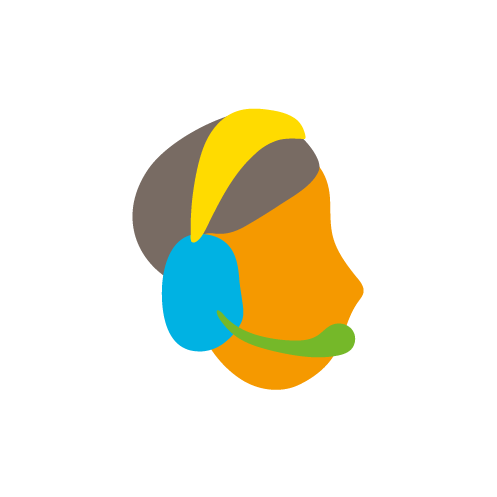Health and safety

At Aleatica, safety is our priority.
That’s why, through our integrated management approach, we are committed to continuously improving safety conditions for our customers and employees. Along with regulatory agencies, we also aim to foster a safety-conscious culture among our suppliers of goods and services as well as the communities in which we operate.
Safety Management System (SMS)
Aleatica Mexico’s Safety Management System (SMS) has been designed to structure and efficiently execute safety and health processes across all our Business Units, based on ISO 45001, 14001, and 39001 standards. This system protects all staff and includes specific controls for contractors, third parties, and other stakeholders. As part of our Safety strategy, we established that Brownfield Business Units were to implement and certify operations under ISO 45001 by 2023. However, some operations experienced delays due to opting for integrated certifications that also cover ISO 14001 and 9001.
Occupational safety initiatives
Outlined below are the key Safety initiatives aligned with our process DOS-PRCS-01: Hazard Identification and Risk Assessment. As part of our Safety strategy, we have implemented various preventive actions aimed at mitigating risks and hazards before they materialise, thereby contributing to the continuous improvement of the process.
Job Hazard Assessment (JHA)
Near-Miss Project
We made a major leap in driving our health and safety culture by rolling out the Near Miss project across all global Business Units. Using the Aleatica Safety Reporting (ASR) platform, this project encourages employees to identify and report unsafe acts and conditions that, if left unaddressed, could lead to incidents or accidents.
Near Miss High Potential Events (HPE)
Safety Stop Cards
Cross-Audits
Safety Operational Inspections by Management and Executives
Our middle managers and executives initiated an operational inspection initiative in 2024. Through this project, we verify compliance with safety standards, monitor the correct implementation of procedures, and supervise the maintenance of order and cleanliness in our facilities. Our leaders also generate quick inspection reports, check the proper use of personal protective equipment (PPE), and evaluate both collective protections and the condition of machinery and equipment.
Technology-driven improvements
The use of technology in the infrastructure sector enhances employee safety and boosts operational efficiency, reduces long-term costs, and helps prevent occupational accidents. The most significant innovations implemented include:
Jaws
Sweepers
Lane Intrusion Alarm System
Mobile Barriers
Automated Pothole Repair Machine
Cushion Trucks
Automatic Cone Truck
Safe Driving Intelligent System (SICS)
We have implemented an intelligent safe driving system that, through internal and external cameras, detects unsafe behaviour by drivers, passengers, or other motorists, such as mobile phone use, distractions, speeding, or failure to use seatbelts. This solution, supported by a programme of recognition and sanctions, aims to strengthen our employees’ road safety cultures.
In 2024, we completed the installation of 43 units in operational vehicles in Mexico, achieving a 63% reduction in unsafe acts and an 87% decrease in seatbelt non-use detections per 1,000 km. Additionally, georeferencing, the panic button, and data digitalisation enhance both safety and the management of vehicle maintenance and fuel consumption.
Mandatory Safety Requirements (MSR)
We have MSRs, which establish the minimum safety standards that our contractors must meet in order to operate with Aleatica Mexico and its Business Units. These requirements are reinforced with specific contractual clauses and supervision by designated managers. In addition, our Safety Control Group carries out the necessary audits to issue the corresponding safety certificates. In 2024, we reviewed and validated 79 contractor safety plans, 17.7% less than in 2023.
Contractor Document Management Software
ASR Platform (Aleatica Safety Report)
Own workforce occupational safety indicators
In 2024, the Lost Time Injury (LTI) indicator decreased by 24% compared to 2023.
The improvement in Safety performance is evident in the trend graphs, which show that—despite a consistent increase in total work hours—LTI cases, lost workdays, and incidence (LTIIR), severity (LTISR), and frequency (LTIFR) rates have started to stabilise following 2023.
Own workforce occupational safety indicators
26
16
25
19
No Data Found
- Number of Lost Time Injuries (LTI)
- Frequency Rate (LTIFR, Lost Time Injury Frequency Rate)
- Incidence Rate (LTIIR, Lost Time Injury Incidense Rate)
- Severity Rate (LTISR, Lost Time Injury Severity Rate)
Contractors’ occupational safety indicators
In 2024, the Lost Time Injury (LTI) rate for contractors decreased by 50% compared to 2023.
Contractors’ occupational safety indicators
8
9
8
4
No Data Found
- Number of lost time injuries
- Lost Time Injury Frequency Rate (LTIFR)
